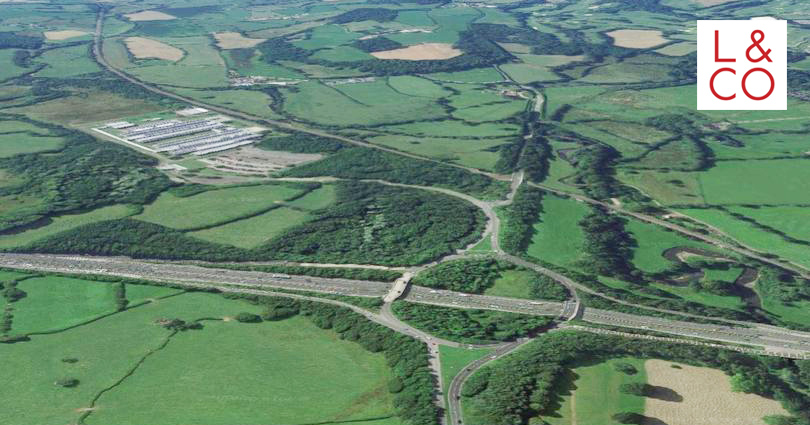What Is A Flash Flood Emergency? A Guide To Preparedness And Response

Table of Contents
Understanding Flash Flood Emergencies
Defining a Flash Flood
A flash flood is a sudden, violent flood characterized by rapidly rising water levels. Unlike regular floods, which may develop over days or weeks, flash floods occur with little or no warning. They are typically caused by intense rainfall over a short period, often associated with thunderstorms or hurricanes. Other causes can include dam or levee failures, and the sudden release of water from a snowpack. The key characteristics of a flash flood include: rapidly rising water, short notice, intense rainfall, and sudden flooding.
- Definition: A flash flood is a rapid flooding of low-lying areas: creeks, streams, rivers, and normally dry areas. Meteorological services often define flash floods based on the rate of water level increase and the depth of inundation.
- Typical Causes: Heavy or excessive rainfall in a short amount of time; dam or levee failures; sudden release of water from a melting snowpack; and coastal storm surges.
- Geographic Areas Prone to Flash Floods: Flash floods can occur anywhere, but areas with steep slopes, mountainous terrain, and urban areas with poor drainage are particularly vulnerable. Desert regions, surprisingly, can also experience intense flash floods due to infrequent but heavy downpours.
- Timeframe: Flash floods can develop within minutes or hours of the triggering event (intense rain, dam failure, etc.), leaving little time for evacuation.
Identifying Flash Flood Warning Signs
Recognizing the warning signs of an impending flash flood is crucial for survival. Stay vigilant and be aware of both visual and auditory cues:
- Rapidly rising water levels: Notice a significant and rapid increase in the water level of streams, rivers, or normally dry areas like creeks and washes.
- Increased water flow speed and intensity: The water's flow becomes significantly faster and more powerful, often carrying debris.
- Unusual sounds: Listen for the roaring sound of water rushing down a normally dry channel or the unusual sounds of water rapidly rising nearby.
- Official weather alerts and warnings: Pay close attention to flash flood warnings issued by your local National Weather Service or equivalent meteorological agency. These warnings are your most reliable indicator of imminent danger.
Flash Flood Preparedness
Creating a Family Emergency Plan
Developing a comprehensive family emergency plan is paramount. This plan should include:
- Emergency contact list: Create a list of emergency contacts, including family, friends, and neighbors outside of the potential flood zone.
- Evacuation plan: Identify multiple evacuation routes, including primary and secondary options, in case of road closures. Know the location of nearby higher ground.
- Communication plan: Establish multiple communication methods (cell phones, two-way radios, pre-arranged meeting points) in case one method fails.
- Safe room: Designate a safe room on higher ground in your home where your family can gather in case evacuation isn’t possible.
- Emergency kit: Pack a kit with essential supplies such as water, non-perishable food, first-aid kit, medications, flashlights, batteries, and important documents.
Protecting Your Property
Taking proactive steps to protect your property can significantly reduce flood damage:
- Moving valuable items to higher ground: Move furniture, appliances, and other valuable items to upper floors or elevated areas.
- Clearing storm drains and gutters: Ensure that storm drains and gutters are clear of debris to allow for efficient water drainage.
- Installing flood barriers or sandbags: Consider installing flood barriers or sandbags around your property to help contain floodwaters.
- Considering flood insurance: Flood insurance is highly recommended, especially in flood-prone areas, as it can provide vital financial assistance after a flood event.
Responding to a Flash Flood Emergency
Staying Safe During a Flash Flood
Your safety is the top priority during a flash flood:
- Evacuate immediately: If instructed to evacuate by authorities, do so immediately without delay. Do not hesitate.
- Seek higher ground: Move to higher ground as quickly as possible. Avoid low-lying areas, basements, and flood-prone zones.
- Avoid driving or walking through floodwaters: Never attempt to drive or walk through floodwaters. The depth and current can be deceivingly strong, and even a few inches of water can sweep you away.
- Turn off utilities: Turn off gas, electricity, and water to prevent further damage.
- Stay informed: Continue to monitor weather alerts and follow instructions from emergency services.
Post-Flash Flood Actions
After the floodwaters recede, there are several important steps to take:
- Damage assessment: Carefully assess the damage to your property and take photographs as evidence for insurance claims.
- Contact insurance companies: Report damages to your insurance company as soon as possible and follow their instructions for filing a claim.
- Safely clean up debris: Wear protective gear and exercise caution when removing debris, as there may be hazards such as sharp objects or contaminated water.
- Seek assistance: Contact local authorities or relief agencies for assistance with cleanup, recovery efforts, and any necessary support.
Conclusion
Flash flood emergencies are dangerous and unpredictable events requiring swift action and thorough preparation. Understanding the risks, developing a comprehensive emergency plan, and knowing how to respond effectively are critical to ensuring your safety and minimizing property damage. Prepare for a flash flood emergency today! Learn more about flash flood safety in your area and develop your flash flood emergency plan now. For more information and resources, visit your local National Weather Service website.

Featured Posts
-
 How To Get Bbc Radio 1 Big Weekend 2025 Tickets Full Line Up And Tips
May 25, 2025
How To Get Bbc Radio 1 Big Weekend 2025 Tickets Full Line Up And Tips
May 25, 2025 -
 Relx Doorstaat Zwakke Economie Dankzij Ai Sterke Groei Voorspeld Tot 2025
May 25, 2025
Relx Doorstaat Zwakke Economie Dankzij Ai Sterke Groei Voorspeld Tot 2025
May 25, 2025 -
 Arda Gueler E Uefa Sorusturmasi Real Madrid Yildizlarina Sok
May 25, 2025
Arda Gueler E Uefa Sorusturmasi Real Madrid Yildizlarina Sok
May 25, 2025 -
 Economische Recessie Relx Blijft Groeien Met Behulp Van Ai
May 25, 2025
Economische Recessie Relx Blijft Groeien Met Behulp Van Ai
May 25, 2025 -
 The M62 Relief Road Burys Unrealized Transport Link
May 25, 2025
The M62 Relief Road Burys Unrealized Transport Link
May 25, 2025
Latest Posts
-
 Le Clash Ardisson Baffie Une Reponse Memorable
May 25, 2025
Le Clash Ardisson Baffie Une Reponse Memorable
May 25, 2025 -
 Thierry Ardisson Et Laurent Baffie Une Dispute Virulente Autour De L Expression Cracher Dans La Soupe
May 25, 2025
Thierry Ardisson Et Laurent Baffie Une Dispute Virulente Autour De L Expression Cracher Dans La Soupe
May 25, 2025 -
 Essaie De Parler Pour Toi La Reponse Cash D Ardisson A Baffie
May 25, 2025
Essaie De Parler Pour Toi La Reponse Cash D Ardisson A Baffie
May 25, 2025 -
 Polemique Ardisson Baffie Il Vient Cracher Dans La Soupe Les Dessous D Une Dispute Explosive
May 25, 2025
Polemique Ardisson Baffie Il Vient Cracher Dans La Soupe Les Dessous D Une Dispute Explosive
May 25, 2025 -
 Adios A Eddie Jordan Ultima Hora Sobre Su Fallecimiento
May 25, 2025
Adios A Eddie Jordan Ultima Hora Sobre Su Fallecimiento
May 25, 2025
